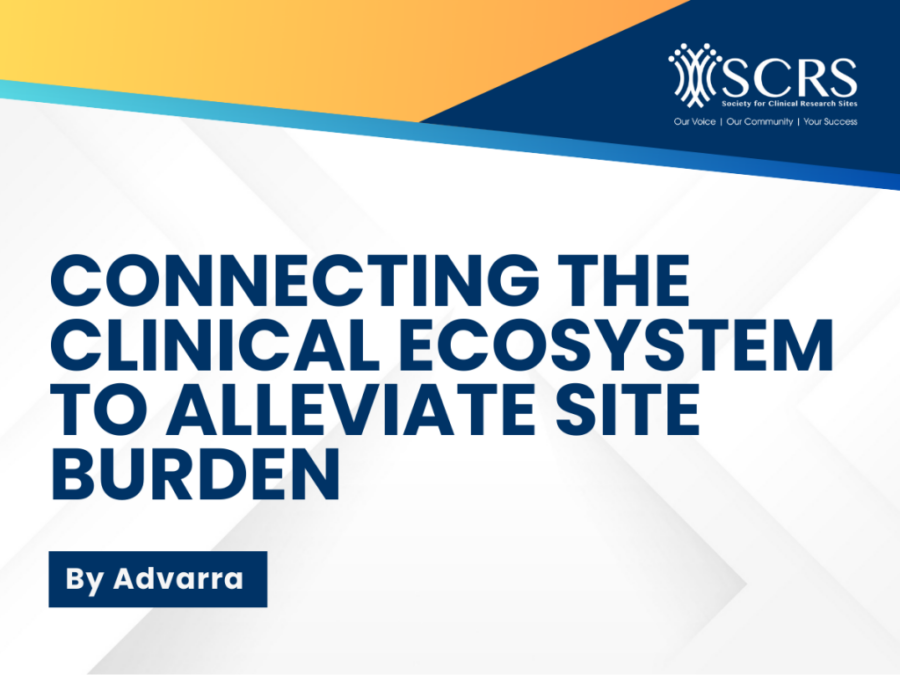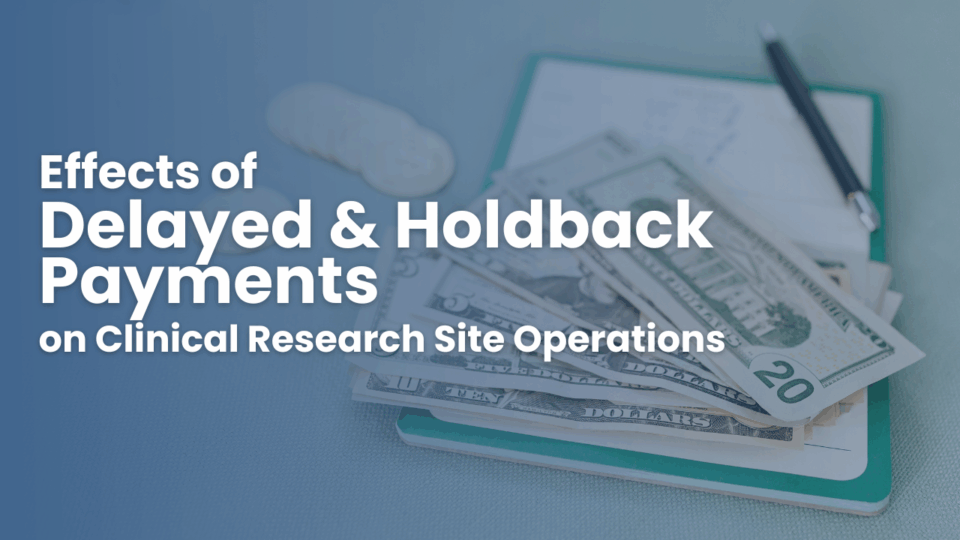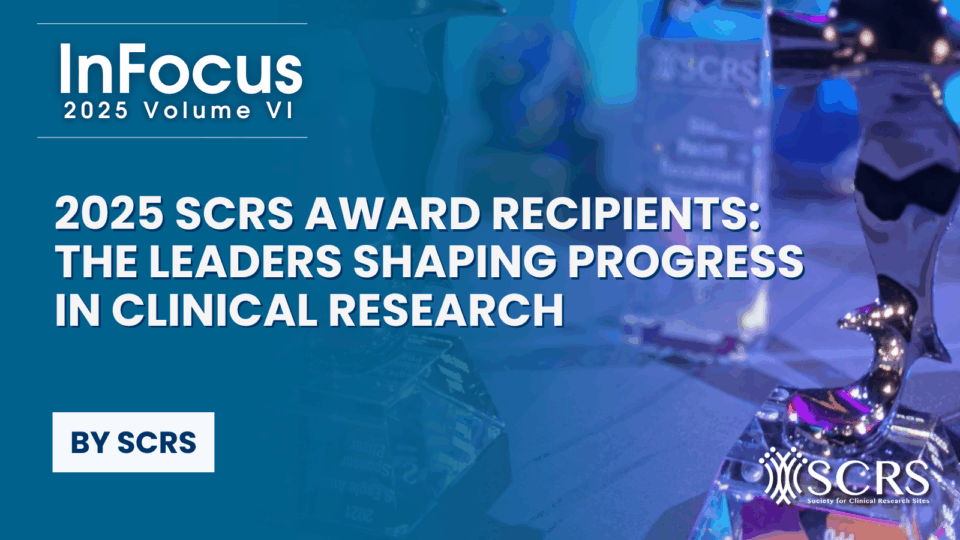Connecting the Clinical Ecosystem to Alleviate Site Burden

The future of clinical research is a connected user experience with automated workflows, streamlined document exchange, and transparency to accelerate studies without compromising compliance.
During the global pandemic, the world saw firsthand how essential clinical trials were in developing medicines to improve health and extend human life. Clinical research sites, including academic medical centers (AMC), non-AMCs, and professional sites and site networks, played (and continue to play) an indispensable role in investigating new medicines.
While novel vaccines and diagnostics were developed in record time to address COVID-19, the typical clinical trial process is still painfully slow, stalled by friction at nearly every point in the process. Compounded by the fact that only 8% of all trials are successful, the industry has work to do to improve key areas of the drug development process. One such area, study startup, represents the biggest opportunity to remove friction, reduce the technology burden, and enhance transparency for sites, pharmaceutical trial sponsors, and contract research organizations (CROs).
Remove Friction from the Start
In Advarra’s 2023 Study Activation Survey Report, sites report set-up and training on sponsor-provided technology systems to be the most burdensome activity they face, even more than contracting and budgeting which are historically rated as the most arduous aspects of study start-up. In fact, sites overwhelmingly report more issues using sponsor-provided solutions, with two-thirds saying the burdens are greater now compared to just five years ago.
With more sponsor-provided technologies and site-owned technologies piling up, the current clinical model is quickly reaching a tipping point. Technology friction is not only causing inefficiency, but it also has a negative downstream effect on the sustainability of the trial site workforce. A 2022 analysis by the Tufts Center for the Study of Drug Development (CSDD) revealed that 66% of principal investigators (PIs) in North America leave research after conducting just one trial (a phenomenon known as ‘one and done’), leaving a gaping staffing hole. PIs often walk away from running trials after their first experience because excess administrative burdens pull them away from patient care.
Connecting the clinical trial ecosystem while simultaneously giving sites technology choices is key to reducing friction that is pervasive in the study startup process and can alleviate unnecessary burdens on sites and their staff. This demands interoperability between site and sponsor systems. A connected clinical ecosystem will provide sponsors, CROs, and sites transparency and easier access to information across various platforms, automate workflows to accelerate research and reduce inefficiency, and streamline document exchange to help ensure compliance and audit readiness.
Reduce Technology Burden While Preserving Site Choice
Clinical research sites are being asked to implement more sponsor-provided technologies, including electronic data capture (EDC), electronic clinical outcomes assessment (eCOA), interactive voice response (IVRS), and safety letter systems to name a few of the alphabet soup of technologies. The unintended consequence of system proliferation is a high number of different web sites, logins, and passwords for site staff to manage.
In fact, sites typically have six or more different logins per study for all the systems they use to conduct trial tasks. According to Patricia Larrabee, consultant for Rochester Clinical Research and Atlas Clinical Research, sponsor-provided systems combined with site systems can add up to “north of a dozen different systems for a single trial, each with their own login.”
One solution is for sponsors, CROs, and sites to standardize on a single technology stack. The challenge with this method is not all sites are the same. The needs and experience of an AMC, hospital system, or private site are different. There’s no one-size-fits-all site solution. Sites want the ability to pick solutions that are best tailored to their unique needs, people, current processes, and standard operating procedures.
The better option is for sponsors to offer a flexible ecosystem that both supports technology naïve sites and enables choice for technology-enabled sites, but with connectivity to allow a frictionless flow of workflows, data, and documents without logging in and out of different systems. Seamless integrations between systems that sites prefer and may already be using versus sponsor-mandated systems that can vary from trial to trial will simplify site work both across sponsors and for non-industry funded studies.
Ideally, sites can perform an activity once and flow it through every system, from a site’s eRegulatory (eReg) binder system to a sponsor’s document exchange technology or from an IRB back to a sponsor’s eTMF and a site’s eReg system. In fact, 81% of survey respondents indicated that they would find connectivity between their own eReg systems and sponsor technology very or extremely valuable.
Automate Workflows for Speed, Compliance, and Transparency
Sponsors are turning to technology to speed trials but are inadvertently adding friction felt acutely by sites and negatively impacting their day-to-day workflows. Different processes and systems make collaboration and real-time decision-making difficult for all plus contribute to duplicate data entry. A connected clinical ecosystem with APIs and other integrations would enable the seamless flow of data and documents across platforms and provide a singular view of study activities.
“We have always been early adopters of technology but in this industry, proprietary software that does not integrate is the norm,” explained Larrabee. “APIs or even AI could create the connective tissue that brings systems together into a powerful ecosystem.”
Every site, especially ones that may be less tech-savvy, wants to operate within their existing processes and not change how they work with every sponsor. When study activation is end-user driven, the process is simpler and compliance is greater, which ultimately benefits all trial stakeholders. This is especially true when it comes to document exchange.
One example is essential document collection. Workflow automation for document collection and review guides stakeholders through the tasks that need to be completed while the accompanying dashboards show what activities are still outstanding and their due dates. Without this automation, coordinating trial activities is hard, with research teams reverting to emailing documents and tracking activities in personal spreadsheets. This can cause missed deadlines, duplicate data entry, and – dangerously – multiple sources of ‘truth’ that can impact compliance.
Connected technologies, however, remove friction from the process. For sites without an eReg system in place, integrated document collection technology that provides a folder structure and organizes, stores, and allows easy access to essential documents is crucial, especially for regulatory inspection. For sites with technology, sponsors can eliminate friction by enabling integration with their system of choice. In a connected technology ecosystem, sponsors can meet sites where they are to drive speed and compliance.
A connected clinical ecosystem not only improves speed and compliance, but also enables transparency – in the form of helpful tools including status dashboards with alerts and notifications for outstanding actions and due dates. Sponsors, for instance, can request a document, assign training, distribute a safety letter, or assign an activity due date and the site is automatically notified and can track progress on their dashboards. At the same time, sponsors can track site status at the individual site, region, and/or global level on their connected dashboards to more efficiently manage site activity.
Sponsors can provide even more value to sites by offering site engagement tools such as visit calculators. Patient engagement tools like recruitment trackers can also enhance the site-patient relationship. When all of these technologies are integrated in the same connective ecosystem, sites, sponsors, and patients benefit through a single user experience.
Let’s Connect for a Better Clinical Future
Study activation involves basic steps that are similar across the industry. Yet it remains one of the most challenging aspects of a clinical trial. Technology improves speed, compliance, and transparency, but too much of a good thing is often not – well, not good.
The industry is paving the path to a new model that integrates technology for a connected clinical ecosystem. It is only through this path that the clinical research industry can realize all the promised technology benefits of acceleration, compliance, and transparency, while at the same time giving sites the freedom to define their own processes and workflow with or without their site technology of choice.
About the Author
As Advarra’s Chief Product Officer, Elisa Cascade is responsible for driving the company’s product vision and management product design and development. She brings more than 30 years of experience in the clinical research industry with a focus on using technology to transform clinical research for all stakeholders. Elisa also serves on the Board of Trustees at the Association of Clinical Research Professionals (ACRP) and will be Board Chair beginning January 2024. She can be reached at elisa.cascade@advarra.com.



